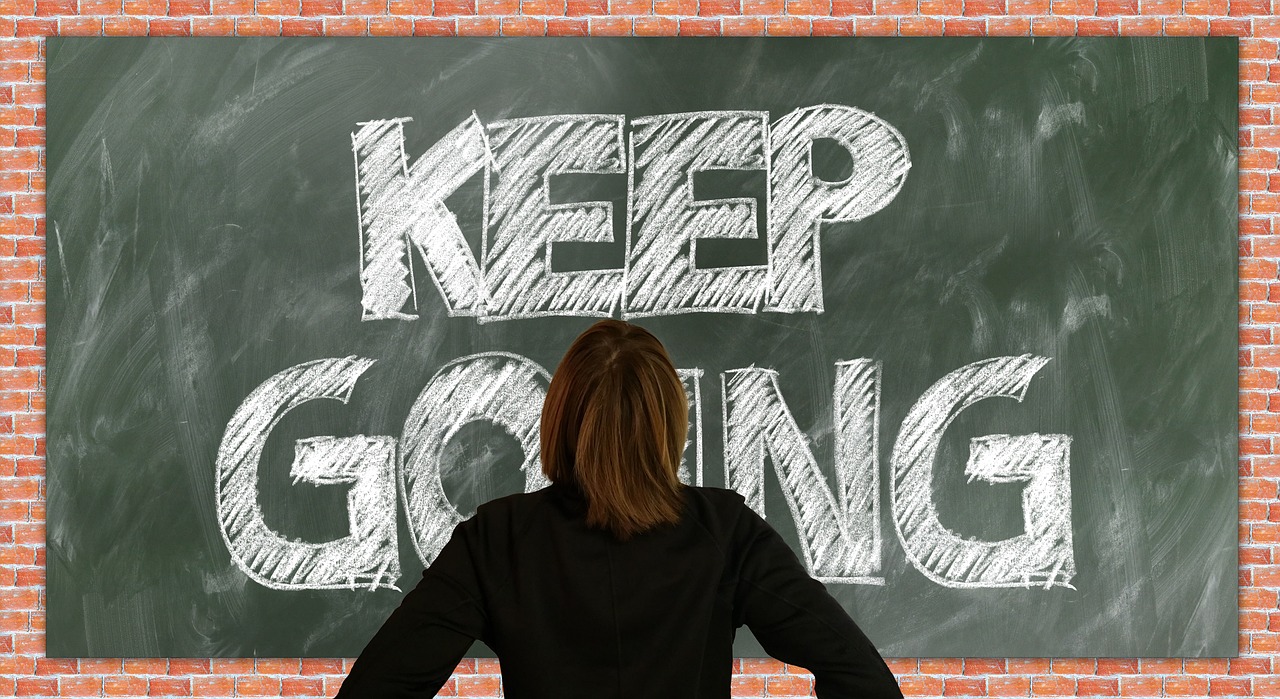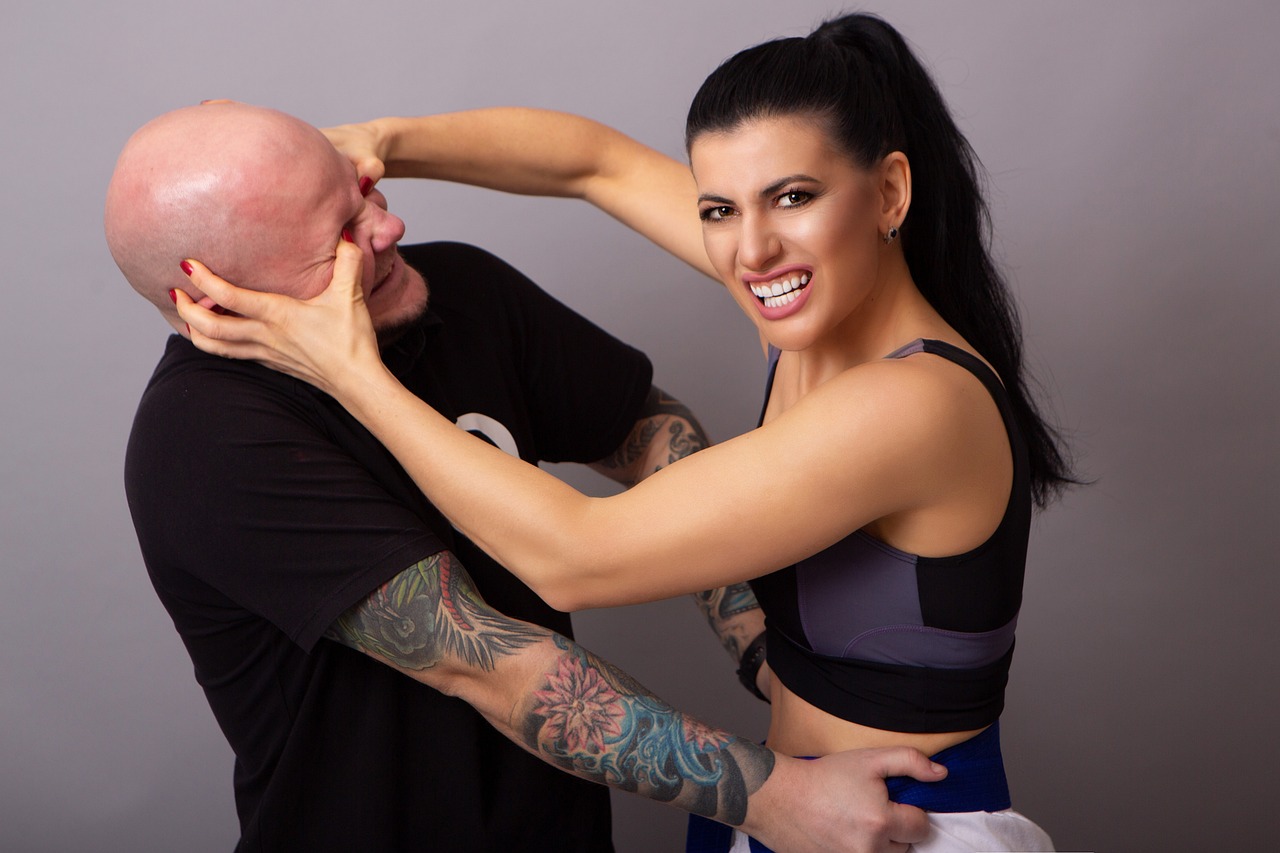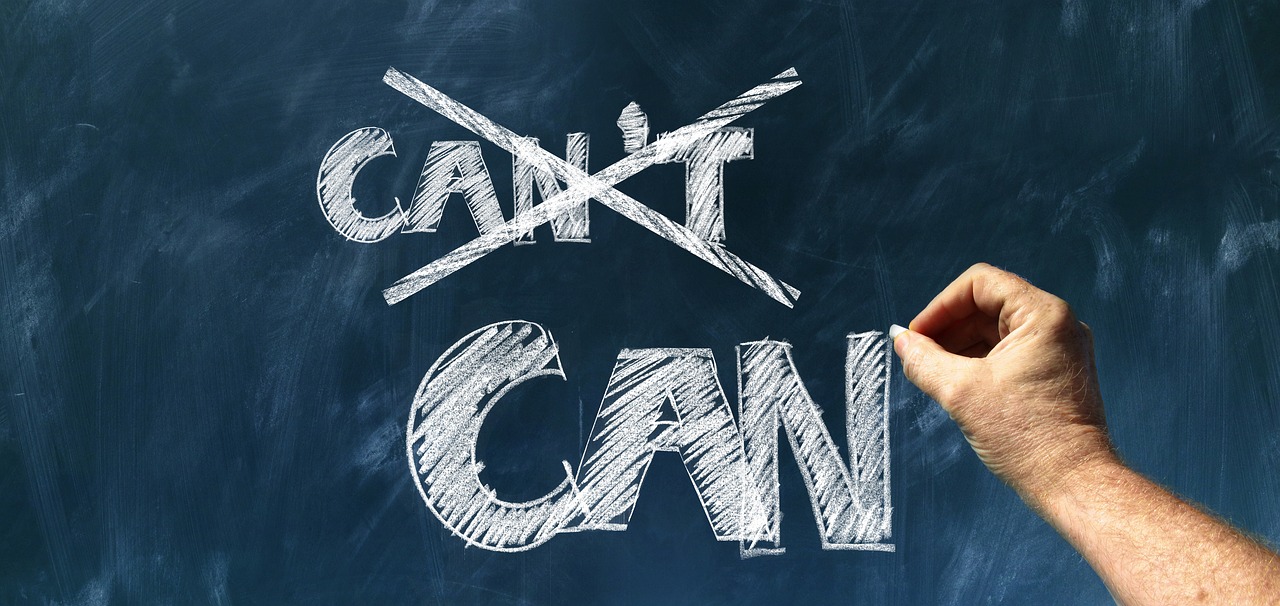Do Self-Defense Techniques Differ Based on Gender?
Self-defense is a critical skill that everyone should consider learning, but the approaches to self-defense can vary significantly based on gender. It's not just about physical strength; there are a myriad of factors that come into play. These include physical attributes, psychological readiness, and even societal expectations. Understanding these differences is essential for tailoring effective self-defense techniques that resonate with individuals, regardless of their gender. So, let’s dive into the nuances that shape self-defense strategies and see why one size does not fit all.
When we talk about self-defense, it’s easy to think of brute strength and combat skills. However, the reality is much more complex. For instance, men and women often face different types of threats, which can influence the techniques they choose to learn. While men might focus on strength-based methods, women may lean towards techniques that emphasize agility and awareness. This doesn’t mean one is better than the other; rather, it highlights the need for customized training that accounts for these differences.
Moreover, societal conditioning plays a significant role. From a young age, boys and girls are often taught different lessons about strength, vulnerability, and conflict resolution. These lessons can affect how individuals perceive their ability to defend themselves. For example, women might be socialized to avoid confrontation, while men may be encouraged to stand their ground. This psychological backdrop can impact not only the techniques they choose but also their confidence levels in high-pressure situations.
In essence, understanding the dynamics of gender in self-defense is crucial for effective training. It’s about empowering individuals—whether they are male, female, or non-binary—to choose the techniques that best suit their personal strengths and circumstances. As we explore further, we’ll look at specific techniques tailored for different genders and how factors like physical strength and psychological readiness come into play.
To truly grasp how self-defense techniques differ based on gender, we must first examine the fundamental differences that exist. These differences can be categorized into three main areas: physical strength, body mechanics, and social conditioning. Each of these elements plays a critical role in shaping the effectiveness of self-defense strategies.
Physical strength is often the most obvious factor. Generally speaking, men tend to have greater upper body strength, which can influence their choice of self-defense techniques. However, this doesn't mean that women can't effectively defend themselves. Many self-defense techniques leverage skill and technique over sheer strength. For instance, techniques that utilize leverage, like joint locks or throws, can be incredibly effective for individuals of any size.
Body mechanics also differ between genders. Women may have different center-of-gravity and flexibility, which can affect how they execute certain moves. Understanding these biomechanical differences can lead to more effective training tailored to individual needs. Lastly, social conditioning cannot be ignored. The way society views gender roles can influence how individuals approach self-defense training and their overall confidence in their abilities.
Physical strength certainly plays a role in self-defense, but it’s not the only determining factor. In fact, many self-defense techniques are designed to allow individuals to use their skill and agility to overcome physical disadvantages. This is particularly important for women, who may not have the same level of upper body strength as their male counterparts. The focus here is on techniques that prioritize skill over brute force.
Women’s self-defense techniques often emphasize agility, awareness, and the use of leverage. This means that rather than relying solely on strength, women can effectively counteract physical threats by using their opponent's energy against them. Techniques like Krav Maga and Brazilian Jiu-Jitsu are particularly popular among women because they focus on these principles.
Training programs aimed at women often emphasize not just physical skills but also mental resilience. The goal is to empower participants, helping them to build confidence and a sense of security in their ability to handle dangerous situations. This empowerment is crucial because it can significantly impact how women respond to threats in real life.
Some popular self-defense techniques for women include:
- Krav Maga: A practical and effective self-defense system that focuses on real-world situations.
- Brazilian Jiu-Jitsu: A martial art that emphasizes ground fighting and submission holds, allowing smaller individuals to defend against larger aggressors.
- Self-defense workshops: Many organizations offer workshops specifically for women, focusing on situational awareness and avoidance strategies.
On the other hand, men may gravitate towards self-defense techniques that are more strength-based, often rooted in traditional martial arts or combat sports. These techniques can be effective but may not always be the best fit for everyone. The emphasis here tends to be on direct confrontation, which can sometimes lead to increased risk in real-life situations.
Understanding the psychological aspects of self-defense is crucial. Factors such as fear, confidence, and mental preparedness can differ significantly between genders, influencing the choice of techniques. For instance, fear can paralyze a person in a threatening situation, making it difficult to react effectively.
Regardless of gender, building confidence is essential for effective self-defense. Strategies such as visualization, role-playing, and scenario-based training can help individuals enhance their self-assurance in potentially dangerous situations. The more prepared someone feels, the more likely they are to respond effectively when faced with a threat.
Men and women may respond differently to perceived threats. For example, research suggests that women are often more likely to assess a situation and seek to de-escalate it, while men may be more inclined to confront the threat directly. These differing responses can shape the effectiveness of self-defense techniques in real-life scenarios.
Finally, societal perceptions and expectations can shape self-defense training approaches. Cultural norms often dictate what is considered acceptable behavior for men and women, influencing how individuals approach self-defense. Understanding these societal influences is vital for developing effective training programs that resonate with all genders.
Q: Are self-defense techniques the same for everyone?
A: No, self-defense techniques can differ based on physical attributes, psychological factors, and societal expectations. Tailored approaches are often more effective.
Q: Can women effectively defend themselves against larger attackers?
A: Yes, many self-defense techniques emphasize skill and leverage, allowing individuals to defend themselves regardless of size differences.
Q: How can I build confidence for self-defense?
A: Confidence can be built through training, visualization, and practice. Engaging in scenario-based training can also help.
Q: Why is understanding societal influences important in self-defense?
A: Societal influences can shape perceptions and expectations surrounding self-defense, affecting how individuals approach training and their overall confidence.

Understanding Gender Differences in Self-Defense
When it comes to self-defense, it’s essential to recognize that not all techniques are created equal. Gender differences play a significant role in how individuals approach self-defense, influenced by a myriad of factors including physical strength, body mechanics, and social conditioning. For instance, men generally possess greater upper body strength, which can affect their choice of techniques. Women, on the other hand, may gravitate towards methods that utilize agility and leverage rather than brute force. This doesn't mean that one gender is inherently better at self-defense than the other; rather, it highlights the need for tailored approaches that align with individual capabilities and experiences.
Moreover, societal expectations can shape how men and women perceive their roles in self-defense scenarios. Traditionally, men have been encouraged to adopt a more aggressive approach, often emphasizing strength and combat sports. Conversely, women may be socialized to prioritize avoidance and de-escalation. These differences can lead to varying levels of confidence and preparedness, which are crucial when it comes to responding to threats. Understanding these nuances is vital for developing effective self-defense strategies that resonate with the unique experiences of each gender.
To further illustrate these differences, let’s consider some key factors that influence self-defense techniques:
- Physical Strength: Men typically have more muscle mass, which allows them to execute strength-based techniques effectively.
- Body Mechanics: Women may utilize their body mechanics differently, often leveraging speed and agility to evade or escape rather than confront.
- Social Conditioning: Cultural norms can dictate how individuals view their roles in self-defense, impacting their training and mindset.
Ultimately, the goal of self-defense training should be to empower individuals, regardless of gender, to feel confident and capable in their ability to protect themselves. By acknowledging these gender differences, we can create more inclusive and effective self-defense programs that cater to the diverse needs of all participants.

Physical Strength and Self-Defense Techniques
When it comes to self-defense, one of the most significant factors influencing the choice and effectiveness of techniques is physical strength. It’s no secret that men and women often have different physical capabilities, which can play a crucial role in how they approach self-defense situations. However, it's essential to recognize that self-defense is not solely about brute strength; rather, it encompasses a variety of techniques that can be adapted based on an individual's unique attributes.
For instance, women may not possess the same level of upper body strength as men, but they can leverage their agility and body mechanics to execute effective self-defense moves. Techniques that emphasize using an attacker’s force against them, like joint locks or throws, can be particularly advantageous. In contrast, men might rely more on strength-based techniques, but this approach can sometimes lead to overconfidence, which may not always be beneficial in a real-life confrontation.
To illustrate the differences in physical strength and self-defense techniques, let's break down some common methods used by both genders:
| Technique | Gender Preference | Key Focus |
|---|---|---|
| Krav Maga | Both | Practicality and efficiency |
| Brazilian Jiu-Jitsu | Women | Leverage and technique over strength |
| Boxing | Men | Power and speed |
| Muay Thai | Men | Strength and conditioning |
As you can see, while some techniques are popular among both genders, others cater specifically to the strengths and preferences of men or women. The beauty of self-defense lies in its versatility; it's about finding what works best for you. This adaptability is crucial, especially in high-stress situations where quick thinking and efficient movements can make all the difference.
Moreover, the importance of training cannot be overstated. Regular practice not only enhances physical capabilities but also builds muscle memory, allowing individuals to respond instinctively during a confrontation. This is where self-defense classes tailored to different genders can shine, providing targeted training that emphasizes the unique strengths and weaknesses of each group.
In conclusion, while physical strength is a factor in self-defense techniques, it is far from the only consideration. By focusing on agility, technique, and the ability to leverage an opponent's strength, individuals can empower themselves to defend against potential threats effectively. Remember, the goal of self-defense is not to engage in a fight but to escape and ensure your safety, and understanding your body’s capabilities is key to achieving that.
- Can women effectively use strength-based techniques? Yes, with proper training and technique, women can utilize strength-based methods effectively, especially when combined with agility and leverage.
- Are there self-defense techniques specifically designed for older adults? Absolutely! Many self-defense classes cater to older adults, focusing on techniques that require less physical strength and more strategic movement.
- How often should I practice self-defense techniques? Regular practice is essential. Aim for at least once a week to keep your skills sharp and build muscle memory.

Techniques for Women
When it comes to self-defense, women often face unique challenges that necessitate tailored approaches. It's not just about physical strength; it's about leveraging agility, awareness, and technique to effectively counter threats. Women are typically smaller and may lack the brute force that many self-defense techniques rely on, which is why focusing on strategies that utilize skill and leverage is crucial. Techniques such as Krav Maga and Brazilian Jiu-Jitsu have gained popularity among women for this reason. These disciplines emphasize using an opponent's energy against them and capitalizing on quick, decisive movements.
One of the most significant advantages of these techniques is that they empower women to defend themselves without needing to match their attacker's strength. For instance, in Krav Maga, practitioners learn to target vulnerable areas of an assailant's body, such as the eyes, throat, or groin. This approach not only increases the chances of a successful defense but also instills a sense of confidence in women, allowing them to feel more in control during potentially dangerous situations.
Moreover, training programs designed for women often incorporate elements that build mental resilience. Empowerment through training is not just about learning physical techniques; it’s about developing a mindset that enables women to react effectively under pressure. This psychological aspect is crucial, as the ability to remain calm and focused can be a game-changer in self-defense scenarios.
In addition to the physical techniques, awareness plays a vital role. Women are often taught to be vigilant about their surroundings and to trust their instincts. This heightened sense of awareness can sometimes be the best defense against an attack. For example, recognizing potentially dangerous situations before they escalate allows women to avoid confrontations altogether.
In summary, the techniques for women in self-defense are not only about physical prowess but also about cultivating a comprehensive skill set that includes mental strength, situational awareness, and effective tactics. By prioritizing agility and technique over sheer strength, women can confidently navigate threats and assert their right to safety. The journey of learning these techniques is empowering, turning fear into confidence and vulnerability into strength.
- What is the best self-defense technique for women?
While there isn't a one-size-fits-all answer, techniques like Krav Maga and Brazilian Jiu-Jitsu are highly effective as they focus on using leverage and targeting vulnerable areas.
- How can self-defense training benefit women?
Self-defense training enhances physical skills, builds confidence, and improves situational awareness, empowering women to protect themselves effectively.
- Is physical strength necessary for self-defense?
No, many self-defense techniques are designed to allow individuals to use technique and strategy rather than relying solely on physical strength.
- Can self-defense training help with mental preparedness?
Absolutely! Many programs focus on building mental resilience, which is crucial for staying calm and focused in high-pressure situations.

Empowerment Through Training
When it comes to self-defense, the journey towards empowerment begins with training. For many women, engaging in self-defense classes is not just about learning how to throw a punch or escape a hold; it’s about building confidence and developing a sense of control over their own safety. Imagine walking into a room filled with other women, all eager to learn and share experiences. This environment fosters a sense of community, making the training process not just effective, but also enjoyable.
Self-defense training equips individuals with essential skills that go beyond physical techniques. It teaches awareness, helping participants to recognize potential threats before they escalate. This heightened awareness is a crucial first step in self-defense, as it allows individuals to avoid dangerous situations altogether. In addition to physical skills, training often emphasizes mental resilience. Participants learn to stay calm under pressure, which can make a significant difference in high-stress situations.
Moreover, the empowerment gained through training can have a ripple effect in various aspects of life. Women who engage in self-defense training often report feeling more confident in their daily interactions, whether it's in the workplace, at school, or in social settings. This newfound confidence can be transformative, leading them to take on challenges they might have shied away from before. For instance, some women have shared stories of how they felt empowered to speak up in meetings or stand their ground in uncomfortable situations, all thanks to the confidence gained through self-defense training.
Training programs tailored for women often incorporate techniques that leverage agility and leverage rather than relying solely on brute strength. This is particularly important given the physical differences that exist. Instructors typically emphasize moves that can be executed quickly and effectively, allowing individuals to escape or neutralize a threat without needing to match the assailant’s strength. Techniques from disciplines such as Krav Maga and Brazilian Jiu-Jitsu focus on using an opponent's energy against them, making them ideal for women who may not have the same physical power as their male counterparts.
In addition to physical training, many programs also incorporate discussions on psychological preparedness. Participants learn about the importance of maintaining a strong mindset and how to manage fear and anxiety in potentially dangerous situations. This holistic approach to training ensures that individuals are not only physically prepared but also mentally equipped to handle threats. As a result, self-defense training becomes a powerful tool for empowerment, providing participants with the skills and confidence they need to navigate the world more safely.
Ultimately, self-defense training is about reclaiming power and agency. It teaches individuals that they have the right to defend themselves and that they can take proactive steps towards their safety. This empowerment is invaluable, as it fosters a sense of independence and self-reliance. Women who train in self-defense often emerge with a newfound belief in their abilities, ready to face the world with confidence and assertiveness.
- What age is appropriate to start self-defense training? Many programs are designed for all ages, but it's best to consult with a local instructor to find the right fit for you or your child.
- Do I need to be physically fit to start self-defense training? Absolutely not! Self-defense classes cater to various fitness levels, and the focus is on skill development rather than physical prowess.
- How long does it take to become proficient in self-defense? Proficiency varies by individual, but consistent practice over a few months can lead to significant improvements.
- Are self-defense classes only for women? No, self-defense classes are available for all genders and can benefit anyone looking to enhance their personal safety.

Common Techniques for Women
When it comes to self-defense, women often face unique challenges that necessitate tailored techniques. The focus on agility and leverage over brute strength is paramount, as many women might not possess the same physical power as their male counterparts. This is where techniques like Krav Maga and Brazilian Jiu-Jitsu come into play, providing practical solutions that empower women to defend themselves effectively.
Krav Maga, developed by the Israeli Defense Forces, is particularly effective because it emphasizes real-world scenarios. The training covers various situations, from defending against grabs and chokes to countering armed assaults. The beauty of Krav Maga lies in its simplicity and efficiency; it teaches practitioners to use their environment to their advantage, turning everyday objects into potential weapons. For instance, a woman can use her keys or a handbag as a striking tool, demonstrating that self-defense doesn’t require specialized weapons but rather quick thinking and adaptability.
On the other hand, Brazilian Jiu-Jitsu (BJJ) focuses on ground fighting and submission techniques. This martial art teaches women how to leverage their body mechanics effectively, allowing them to control larger opponents through technique rather than strength. BJJ emphasizes positional awareness and the importance of staying calm under pressure, which can be invaluable in a self-defense situation. By mastering techniques such as the guard position or escapes from holds, women can turn the tables on an aggressor, showcasing that skill can triumph over size.
Moreover, self-defense training for women often incorporates elements of awareness and avoidance. It’s not just about physical techniques but also about recognizing potential threats before they escalate. This aspect of training encourages women to trust their instincts and develop a heightened sense of situational awareness. For instance, practicing scenarios in a controlled environment can help women learn to identify red flags in social situations, making them less likely to find themselves in dangerous encounters.
In addition to these techniques, many self-defense classes for women focus on building confidence and mental resilience. Empowerment through training is a key theme, as instructors aim to instill a sense of capability and self-worth in their students. It’s not uncommon for women to leave a self-defense class feeling more empowered and ready to face the world, knowing they possess the tools to protect themselves if necessary.
In summary, the common techniques for women in self-defense are not just about physical prowess; they encompass a holistic approach that includes mental preparation, situational awareness, and practical skills. By focusing on methods like Krav Maga and Brazilian Jiu-Jitsu, women can equip themselves with the knowledge and confidence they need to navigate potentially dangerous situations effectively.
- What is the best self-defense technique for women?
There isn't a one-size-fits-all answer, as the best technique depends on individual comfort and physical ability. However, techniques like Krav Maga and Brazilian Jiu-Jitsu are widely recommended for their practicality and effectiveness.
- Do I need to be physically strong to learn self-defense?
No, self-defense techniques often rely more on skill, technique, and leverage than on physical strength. Many women have successfully defended themselves using their knowledge of these principles.
- How can I find a good self-defense class?
Look for classes that focus on self-defense rather than just martial arts. Check reviews, ask for recommendations, and consider attending a trial class to see if it fits your needs.

Techniques for Men
When it comes to self-defense, men often gravitate towards techniques that emphasize strength and aggression. This inclination is not just a product of physical capabilities but also a reflection of societal norms and expectations. Many self-defense classes for men focus on combat sports like boxing, Muay Thai, and Brazilian Jiu-Jitsu. These disciplines not only teach effective striking and grappling techniques but also foster a mindset geared towards assertiveness and resilience.
One of the key aspects of men's self-defense training is the focus on powerful techniques that can quickly incapacitate an opponent. For instance, in Brazilian Jiu-Jitsu, practitioners learn to use leverage and technique to control or submit an opponent, which can be particularly effective in scenarios where brute strength might not be advantageous. This is crucial because, in a real-life confrontation, being able to neutralize a threat without escalating the situation is often the best course of action.
In addition to grappling arts, striking techniques play a significant role in men's self-defense. Techniques from Muay Thai, for example, teach the use of elbows, knees, and powerful kicks, which can be devastating in a self-defense situation. However, it’s important to remember that while these techniques can be effective, they should be used judiciously. The goal of self-defense is not to engage in a fight but to escape safely from a dangerous situation.
Moreover, understanding the psychology behind a confrontation is just as important as mastering physical techniques. Men are often conditioned to respond to threats with aggression, but this can sometimes lead to poor decision-making. Training programs increasingly incorporate elements of mental preparedness, teaching men to assess situations critically and choose when to engage or disengage. This is where the balance between physical skill and mental acuity becomes vital.
In terms of training environments, many self-defense classes for men are structured around a competitive atmosphere, which can enhance learning and motivation. Practitioners often spar with one another, simulating real-life scenarios that require quick thinking and adaptability. This not only builds physical skills but also instills a sense of camaraderie and support among participants.
Ultimately, the effectiveness of self-defense techniques for men hinges on a combination of physical prowess, mental preparedness, and the ability to read a situation. While traditional strength-based methods remain popular, there is a growing recognition of the importance of strategy and awareness. By blending these elements, men can develop a well-rounded approach to self-defense that equips them to handle various threats while promoting a mindset of safety and responsibility.
- What are the best self-defense techniques for men? Techniques like Brazilian Jiu-Jitsu, Muay Thai, and boxing are highly effective due to their focus on both striking and grappling.
- How important is mental preparation in self-defense? Mental preparation is crucial; it helps individuals assess situations accurately and make informed decisions about engaging or escaping.
- Can women benefit from techniques commonly practiced by men? Absolutely! Many techniques can be adapted for anyone, regardless of gender, focusing on leverage and strategy over brute strength.
- Is self-defense training only for physical confrontations? No, self-defense training also includes awareness and de-escalation strategies to avoid physical confrontations whenever possible.

Psychological Factors in Self-Defense
When it comes to self-defense, the mind plays a pivotal role that often gets overshadowed by physical techniques. Understanding the psychological aspects of self-defense is crucial, as they can significantly impact how individuals respond to threats. Did you know that fear can often paralyze a person, rendering even the best techniques ineffective? This is where the mental game comes into play. It's not just about knowing how to throw a punch or apply a hold; it's also about being mentally prepared to react when the unexpected happens.
For many, fear is the first instinctive response to a threatening situation. However, the way men and women process this fear can differ. Men might respond with aggression or a fight mentality, while women may lean towards avoidance or de-escalation. This difference can shape the choice of self-defense techniques. For example, a man might feel compelled to confront an attacker head-on, while a woman might prioritize escape. Understanding these psychological tendencies can help tailor self-defense training to be more effective for each gender.
Moreover, confidence is a game-changer in self-defense scenarios. A person who believes in their ability to defend themselves is more likely to act decisively when faced with danger. This is why confidence-building exercises are integral to self-defense training. They help individuals, regardless of gender, to cultivate a mindset that is ready to respond. In fact, many self-defense programs incorporate mental conditioning techniques, such as visualization and positive affirmations, to bolster participants' self-assurance.
Consider the following factors that influence psychological preparedness in self-defense:
- Fear Management: Learning to recognize and manage fear can enhance a person's ability to respond effectively.
- Situational Awareness: Being aware of one’s surroundings can help individuals avoid potential threats before they escalate.
- Decision Making: Quick and effective decision-making skills are crucial in high-pressure situations.
In addition to fear and confidence, the response to threats can vary widely between genders. Men often have a tendency to react with aggression, which can sometimes lead to escalation. On the other hand, women may instinctively seek to de-escalate or retreat. Understanding these differences can help in developing training programs that cater to the unique psychological needs of each gender. For instance, incorporating role-playing scenarios can help participants practice their responses in a safe environment, allowing them to build both physical skills and mental resilience.
Ultimately, the psychological factors in self-defense highlight the importance of a well-rounded approach to training. It's not just about physical prowess; it's about fostering a mindset that embraces both readiness and resilience. By addressing these psychological aspects, self-defense training can empower individuals to face threats with confidence and clarity.
- What is the most important psychological factor in self-defense? Confidence is often cited as the most crucial psychological factor, as it can significantly affect how one responds to a threat.
- How can I build confidence for self-defense? Engaging in regular training, visualization techniques, and positive self-talk can help build confidence.
- Do men and women respond differently to threats? Yes, research suggests that men may respond with aggression, while women often prioritize avoidance or de-escalation.
- Is mental preparation as important as physical training? Absolutely! Mental preparation is key to effectively utilizing physical skills in real-life situations.

Confidence Building for All Genders
Building confidence is a universal necessity when it comes to self-defense, transcending the boundaries of gender. It’s not just about knowing a few moves; it’s about feeling empowered and capable of handling challenging situations. Imagine walking down a dimly lit street, and instead of feeling vulnerable, you exude an aura of strength and assurance. This transformation often begins with training and education, which can play a pivotal role in fostering self-belief.
Self-defense training programs are increasingly recognizing the importance of psychological preparedness alongside physical skills. They are designed to equip individuals with not just techniques, but also the mental fortitude to face potential threats. This training often includes scenarios that simulate real-life situations, allowing participants to practice their responses in a controlled environment. By doing so, they can develop a heightened sense of awareness and learn to trust their instincts.
Moreover, confidence-building exercises can vary widely, but they often share common elements that resonate with both men and women. For instance, role-playing can be an effective way to prepare for confrontations. Participants may engage in mock scenarios where they practice their responses to various threats. This not only hones their physical skills but also reinforces their ability to stay calm under pressure. Imagine being able to react swiftly and decisively because you’ve been there before, even in a simulated context.
Another essential aspect of confidence building is the supportive community that often surrounds self-defense training. Engaging with others who share similar goals fosters a sense of camaraderie and mutual encouragement. This environment can be particularly uplifting, as individuals cheer each other on, celebrate successes, and learn from setbacks. It's like being part of a team where everyone is rooting for each other, which can significantly enhance one's self-esteem.
Additionally, instructors play a crucial role in this confidence-building journey. A good instructor not only teaches techniques but also inspires students to push beyond their perceived limits. They instill a belief that everyone, regardless of their physical attributes, can learn to defend themselves effectively. It's akin to having a coach who believes in your potential, urging you to dig deeper and discover strengths you didn’t know you had.
In summary, confidence building in self-defense is a multifaceted process that involves physical training, mental preparedness, supportive communities, and inspiring instructors. By focusing on these elements, individuals of all genders can cultivate the self-assurance needed to navigate potentially threatening situations. After all, the essence of self-defense lies not just in the techniques learned but in the belief that one can stand strong in the face of adversity.
- What is the best way to build confidence in self-defense? Engaging in consistent practice, participating in role-playing scenarios, and surrounding oneself with a supportive community can greatly enhance confidence.
- Are there specific self-defense techniques that are better for building confidence? Techniques that focus on leveraging body mechanics and situational awareness, such as Krav Maga and Brazilian Jiu-Jitsu, can be particularly effective.
- How important is mental preparedness in self-defense? Mental preparedness is crucial; it helps individuals stay calm and make quick decisions during high-stress situations.
- Can self-defense training benefit individuals beyond physical skills? Absolutely! It fosters self-esteem, resilience, and a sense of empowerment that can positively impact various aspects of life.

Response to Threats
When it comes to self-defense, the way individuals respond to threats can vary significantly based on gender, shaped by both biological and social factors. This response can often determine the effectiveness of self-defense techniques in real-life situations. For instance, studies have shown that men may instinctively react to threats with a fight-or-flight response that leans more towards confrontation. This reaction often stems from social conditioning, where aggression is more socially accepted and even encouraged in males. On the other hand, women might be more inclined to assess the situation and consider escape routes before engaging, reflecting a different set of survival instincts that prioritize avoidance over confrontation.
This divergence in responses can lead to varied outcomes in self-defense scenarios. Men might rely on strength-based techniques, believing that overpowering an assailant is the best option. However, this approach can sometimes backfire, especially if the assailant is larger or more skilled. Conversely, women, who often train in techniques that emphasize agility and leverage, may find themselves better equipped to handle situations where they need to outsmart their opponent rather than overpower them. This difference highlights the importance of tailoring self-defense training to individual responses and abilities.
Furthermore, the psychological aspect of threat response cannot be overlooked. Factors such as fear, anxiety, and confidence play a crucial role in how both men and women react. For example, a woman who has undergone extensive self-defense training may feel more empowered and confident, allowing her to react decisively in a threatening situation. In contrast, a man who lacks training may find himself paralyzed by fear, unable to leverage his physical strength effectively. This underscores the importance of mental preparedness alongside physical training.
To illustrate these differences, consider the following table that summarizes common responses to threats based on gender:
| Response Type | Men | Women |
|---|---|---|
| Instinctive Reaction | Fight | Flight or Assess |
| Preferred Techniques | Strength-based | Agility and Leverage |
| Psychological Factors | Confidence in Strength | Confidence through Training |
Ultimately, understanding these differences in threat response can lead to more effective self-defense training programs that cater to the unique needs of individuals, regardless of gender. By recognizing how psychological readiness and physical responses shape our actions during threatening situations, we can better prepare ourselves to handle real-life confrontations with confidence and skill.
- What should I do if I feel threatened? It's essential to stay calm, assess the situation, and look for escape routes. If necessary, use self-defense techniques you've learned.
- Are self-defense techniques the same for everyone? No, techniques can vary based on physical abilities, gender, and individual training. It's important to find what works best for you.
- How can I build confidence in self-defense? Regular training, understanding techniques, and mental preparation can significantly boost your confidence in self-defense situations.

Societal Influences on Self-Defense Training
When we talk about self-defense, we can't ignore the powerful role that society plays in shaping how individuals perceive and approach self-defense training. From cultural norms to media representations, the societal influences can either empower or hinder one’s ability to defend themselves effectively. For instance, in many cultures, there are traditional expectations regarding masculinity and femininity, which can dictate how men and women are expected to respond to threats. Men might be socialized to be more aggressive and confrontational, while women are often taught to be more passive or to avoid confrontation altogether. This creates a stark contrast in self-defense training programs, as they often cater to these preconceived notions.
Moreover, the availability of self-defense classes can also vary significantly based on societal factors. In urban areas, where crime rates may be higher, there tends to be a greater emphasis on self-defense training, especially for women. However, in rural settings, the perception of safety might lead to a decreased interest in such programs. This disparity can create a gap in skills and preparedness between different populations. Additionally, the media plays a crucial role in shaping perceptions about self-defense. Action movies and news stories often depict violent confrontations, which can lead to a sensationalized view of self-defense that may not reflect real-life scenarios.
In many societies, there are also significant stigmas attached to self-defense training. For example, some individuals might feel that attending a self-defense class is an admission of vulnerability, leading to a reluctance to participate. This is particularly true for women, who may fear being judged for taking self-defense classes, as societal expectations often dictate that they should be submissive or non-confrontational. Conversely, men may feel pressured to engage in aggressive forms of self-defense training to conform to societal expectations of masculinity. Thus, the societal lens through which self-defense is viewed can profoundly influence who participates in training and how they approach it.
To better understand these influences, it's essential to consider the demographics of those who typically engage in self-defense training. A recent study revealed the following breakdown of participants in self-defense classes:
| Gender | Percentage of Participants |
|---|---|
| Women | 60% |
| Men | 40% |
This data highlights that women are often more likely to seek out self-defense training, primarily due to societal pressures surrounding personal safety. However, it also raises questions about the types of training that are available and whether they adequately address the specific needs of different genders. Are women receiving training that empowers them to handle threats effectively, or are they being taught to simply escape? Similarly, are men being trained to use their strength responsibly, or are they encouraged to engage in aggressive behaviors?
Ultimately, the societal influences on self-defense training are complex and multifaceted. They encompass everything from cultural expectations to media portrayals and even personal experiences. As we continue to explore and understand these influences, it becomes increasingly clear that effective self-defense training must not only teach physical techniques but also address the societal constructs that shape our understanding of safety and vulnerability. By recognizing and challenging these constructs, we can create a more inclusive and effective approach to self-defense training for everyone.
- What are some common societal misconceptions about self-defense?
Many people believe that self-defense is only about physical strength, overlooking the importance of awareness and mental preparedness. - How can societal influences impact self-defense training?
Societal norms can dictate who participates in training, what techniques are emphasized, and how individuals perceive their own vulnerability. - Are self-defense classes effective for everyone?
Yes, but the effectiveness often depends on how well the training addresses the specific needs and concerns of different genders.
Frequently Asked Questions
- Do self-defense techniques vary based on gender?
Yes, self-defense techniques can differ based on gender due to various factors such as physical strength, body mechanics, and social conditioning. These differences can influence the choice and effectiveness of self-defense methods, making it essential to tailor techniques to fit individual needs.
- What self-defense techniques are recommended for women?
Women often benefit from techniques that prioritize agility, awareness, and leverage rather than brute strength. Popular methods include Krav Maga and Brazilian Jiu-Jitsu, which focus on using an attacker's force against them and emphasize quick, effective responses to threats.
- How can training empower individuals in self-defense?
Training programs designed for self-defense not only teach physical techniques but also focus on building confidence and mental resilience. Empowerment through training helps individuals feel more prepared and capable of handling potential threats, regardless of gender.
- What psychological factors affect self-defense?
Psychological aspects such as fear, confidence, and mental preparedness play a significant role in self-defense. These factors can differ by gender and influence how individuals respond to threats, which in turn affects the effectiveness of their chosen self-defense techniques.
- How do societal influences shape self-defense training?
Societal perceptions and cultural norms can significantly impact the development and approach of self-defense training. These influences may dictate which techniques are emphasized for different genders, often reflecting broader societal expectations and values.
- Can men and women respond differently to threats?
Yes, men and women may have different responses to perceived threats, which can shape their self-defense strategies. Understanding these differences is crucial for developing effective techniques that cater to the unique needs and reactions of each gender.
- What is the importance of confidence in self-defense?
Confidence is key in self-defense situations. It empowers individuals to act decisively and effectively when faced with danger. Building self-assurance through training and practice can significantly enhance one's ability to respond to threats, regardless of gender.



















